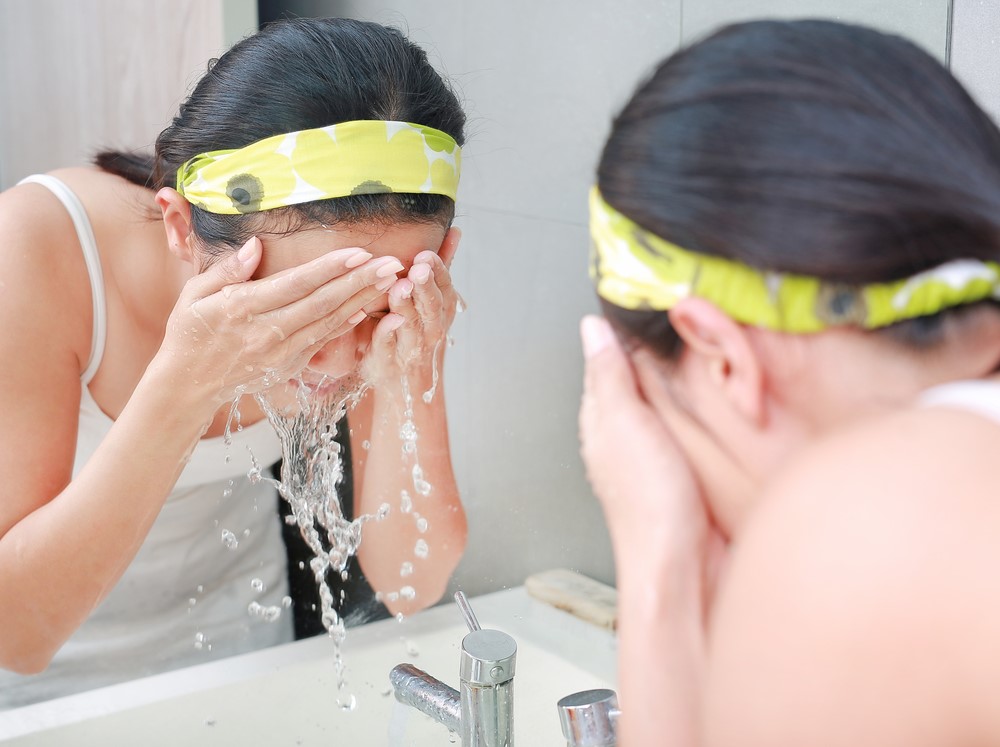Blepharitis is the term used by medical professionals to describe the inflammation of the eyelids. It is an inflammation that occurs on the eyelids, and it’s characterized by red, irritated, and itchy eyelids. People with blepharitis are often distinguished by the appearance of dandruff-like scales on their eyelashes.

Blepharitis is a common eye problem that affects millions of people around the world. It affects people of all ages, but people age 50 and above are more at risk since the lacrimal glands, which secrete part of your tears, become blocked more easily as you grow old. Although the condition is not serious, it can be annoying, unattractive, uncomfortable, and embarrassing to the person who has it.
Types of Blepharitis and Their Causes
Blepharitis has two types: anterior and posterior.
- Anterior blepharitis.
Develops outside of the eyelid where the eyelashes are attached. Anterior blepharitis is usually caused by a bacterial infection.
- Bacteria are commonly found on the skin, especially on the face and the eyelids. But once bacteria becomes excessive, or if your eyelids fail to react against them, a bacterial infection may occur.
- Allergies and mite infestations on the eyelashes, in some cases, also cause anterior blepharitis.
- Posterior blepharitis
Develops on the inner part of the eyelids that touch the eyeball.
- Posterior blepharitis can occur if the glands of the eyelids produce oil irregularly, which creates an ideal environment for bacteria to grow.
- Posterior blepharitis may also develop as a result of a skin condition such as scalp dandruff or rosacea.
Effective Treatment Options for Blepharitis
It’s important to note that blepharitis is usually an ongoing or chronic condition, which means it can’t be totally cured. You can, however, try to control it by using the following treatment options for anterior or posterior blepharitis.
- Treatment options for anterior blepharitis.
The treatment for anterior blepharitis usually depends on the severity of the condition. The most common, effective treatment used for anterior blepharitis is eyelid scrubs. Eyelid scrubs are extremely effective in removing foreign objects or materials from your eyelids and to treat blepharitis.
- Your doctor may also recommend that you use proprietary cleansers to clean your eyelids such as Lid-Care Sterile Wipes, Ocusoft Pads, or Supranettes.
- Your doctor may also suggest that you practice an eyelid cleaning routine at least twice a day.
For more chronic anterior blepharitis, your doctor may give you a prescription antibacterial product such as Fucithalmic eye drops to treat the condition.
- Treatment options for posterior blepharitis.
If you are suffering from posterior blepharitis, a long-term oral prescription will be required to treat the condition effectively.
Oral antibiotics are more effective than topical antibiotics when it comes to treating posterior blepharitis. Some of these oral antibiotics include doxycycline, minocycline, and tetracycline.
Home Remedies for Blepharitis
If your blepharitis is not so severe that antibiotic treatment is necessary, you may try the following home remedies to help treat the condition.
- Warm compress. Applying a warm compress to the affected eyelids can help treat blepharitis. This will make it easier for you to clean up your eyelids and remove all the crusty deposits from your eyes. You may use a cotton ball, a flannel, or a soft pad as a warm compress for your eyelids.
- Tea tree oil. The tea tree oil contains antimicrobial properties that are effective for treating blepharitis. Tea tree oil can help moisturize your dry, flaky eyelids and reduce the inflammation in your eyes.
- Antibacterial hand wipes. There are antibacterial hand wipes sold in stores today that can also be used as a treatment option for blepharitis. These hand wipes usually contain benzethonium chloride, which helps eliminate bacteria from the skin. They can be used to clean your eyes and remove foreign objects sticking to your eyelids and eyelashes.
- Castor oil. Castor oil can also be used to help treat blepharitis. It provides quick relief from the pain, irritation, itchiness, redness, inflammation, and burning sensation in your eyes and eyelids.
Prevention Tips for Blepharitis

Although blepharitis is not entirely curable, you can, however, do some precautionary measures to help prevent it from developing and keep its resultant complications in check.
- Always wash your face before going to sleep at night, making sure that your eyelids and eyelashes are clean.
- Don’t forget to remove your eye makeup carefully before going to sleep at night regardless if you are tired or not.
- If you notice some early symptoms of blepharitis, avoid putting eye makeup at all.
- Don’t use your contaminated makeup products. Replace them to prevent blepharitis from developing again.
- If you have blepharitis already and are experiencing irritation or itchiness in the eyes, you must avoid rubbing your eyes, no matter what. Rubbing your eyes when you have blepharitis can result in further contamination.
- Always use an anti-dandruff shampoo to get rid of scalp dandruff and to prevent it from falling on your eyelashes.
- Don’t wear contact lenses until the symptoms and complications of blepharitis have been treated. Make sure that you always clean your contact lenses before you wear them.
- Always maintain proper hygiene so you can be free from bacteria.
Proper Hygiene and Preventive Care Can Help
Blepharitis is tough to deal with. You may be able to treat it now, but there’s still a good chance that it will occur on your eyelids again. Although blepharitis does not pose any threat to your eyesight, it can still cause some serious problems for you. Not only does it annoy you, but blepharitis can also be embarrassing since this condition is usually attributed to poor hygiene. So if you don’t want to suffer from blepharitis, be sure to observe proper hygiene all the time, follow the preventive tips mentioned above and seek blepharitis treatment from a professional.
About The Author:
 Lily Pierce’s creative and enthusiastic writing spirit remains in all of her pieces, and this is evident with her contributions for Dry Eyes Clinic particularly on blepharitis treatment. Her passion to create informative and accessible materials for her readers have motivated her to continuously find ways to improve upon her craft. As a writer, Lily loves writing on issues about health and fitness, and outside of work, you can find Lily enjoying a good meal in one of the local restaurants.
Lily Pierce’s creative and enthusiastic writing spirit remains in all of her pieces, and this is evident with her contributions for Dry Eyes Clinic particularly on blepharitis treatment. Her passion to create informative and accessible materials for her readers have motivated her to continuously find ways to improve upon her craft. As a writer, Lily loves writing on issues about health and fitness, and outside of work, you can find Lily enjoying a good meal in one of the local restaurants.




